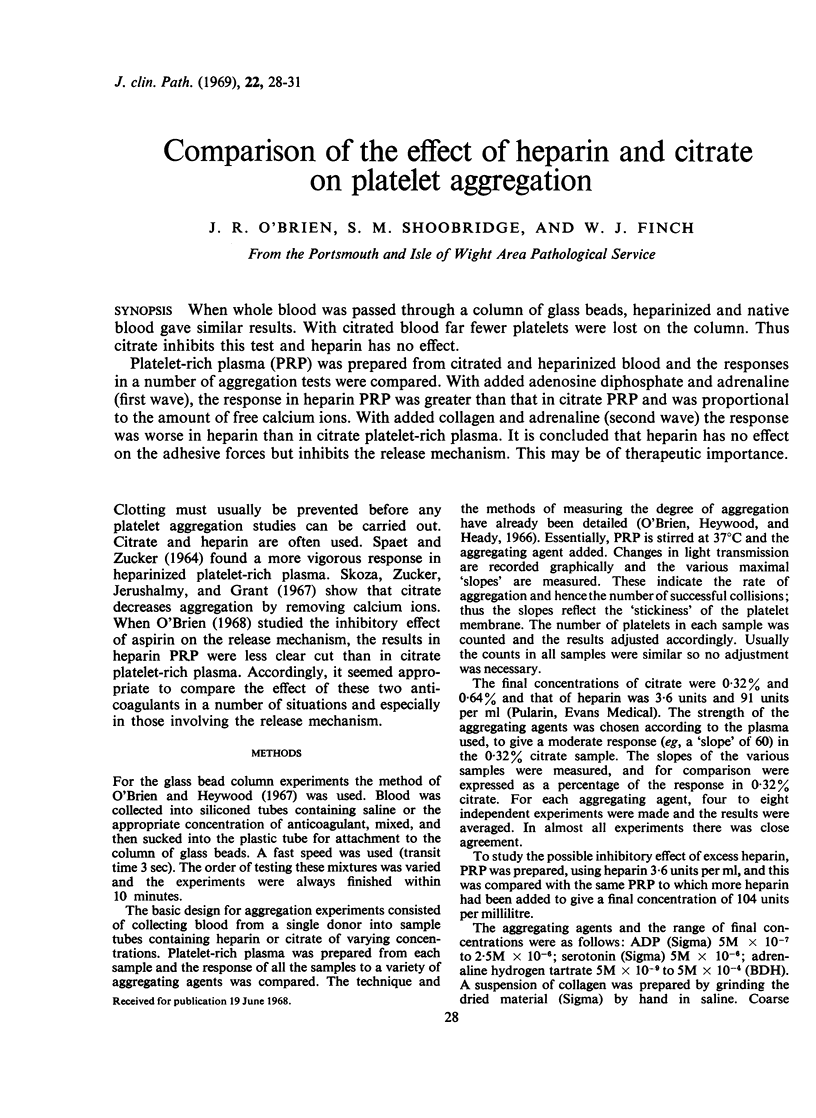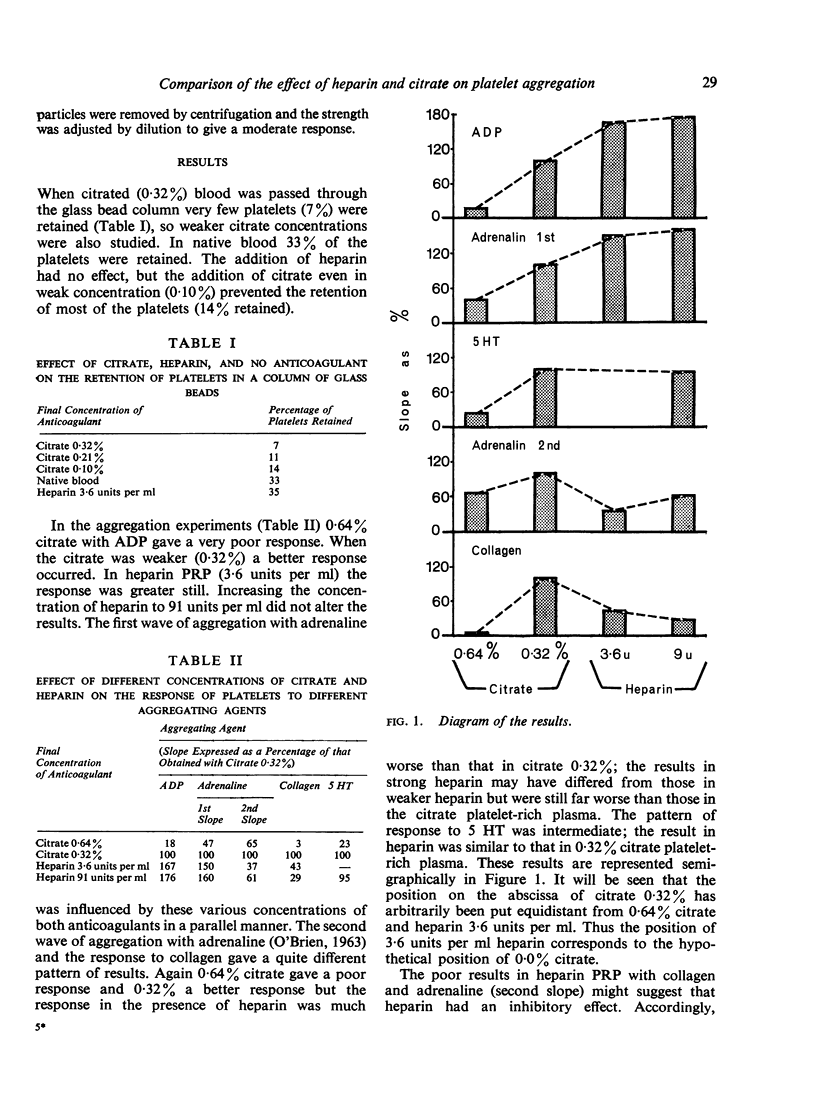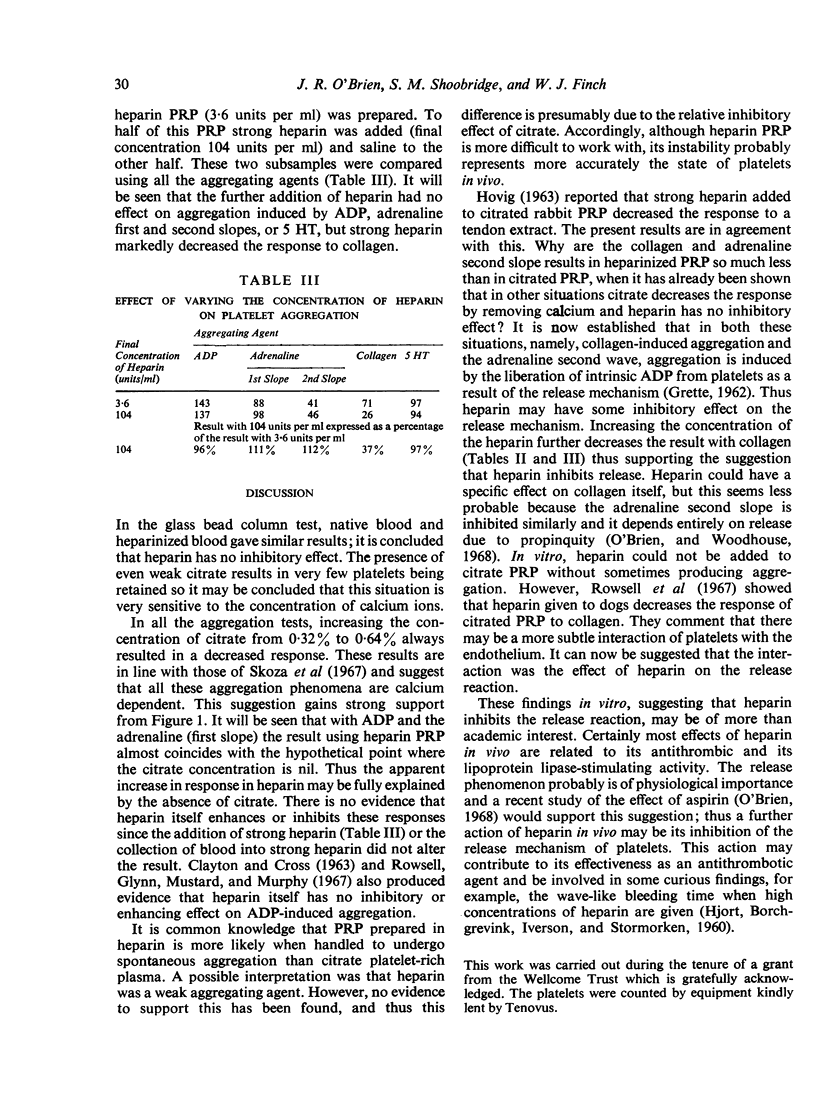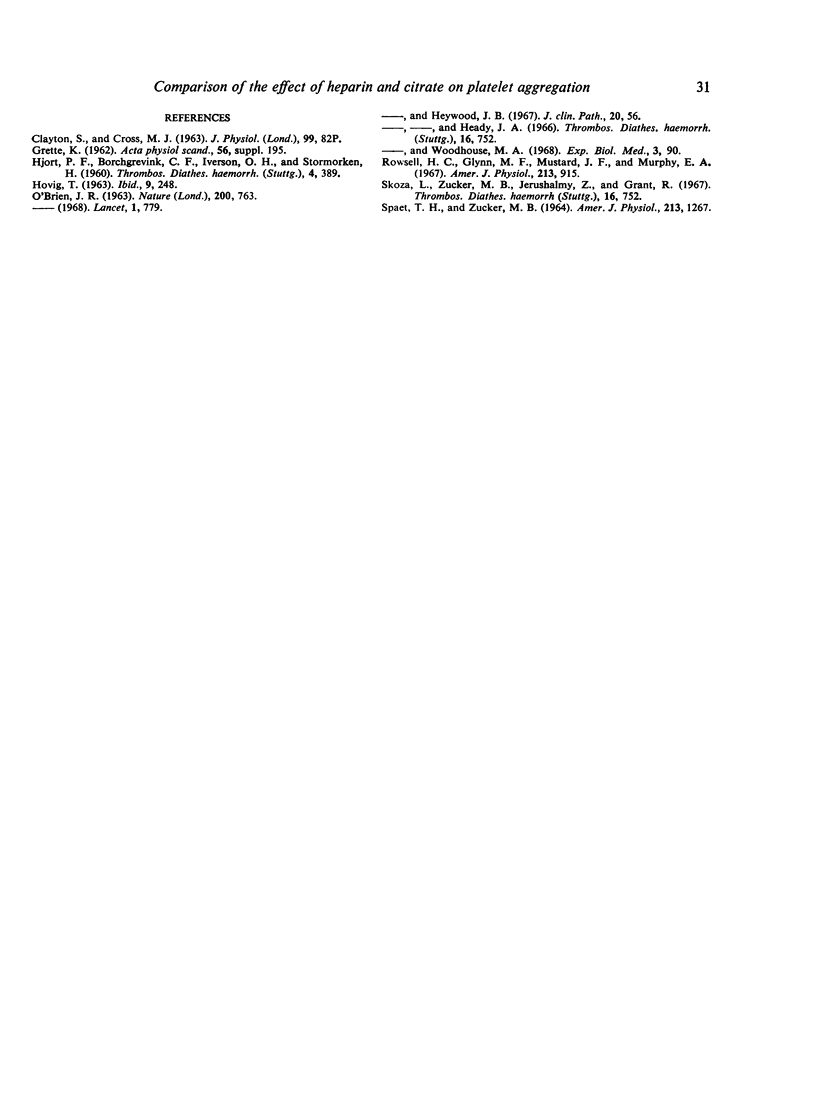Abstract
When whole blood was passed through a column of glass beads, heparinized and native blood gave similar results. With citrated blood far fewer platelets were lost on the column. Thus citrate inhibits this test and heparin has no effect.
Platelet-rich plasma (PRP) was prepared from citrated and heparinized blood and the responses in a number of aggregation tests were compared. With added adenosine diphosphate and adrenaline (first wave), the response in heparin PRP was greater than that in citrate PRP and was proportional to the amount of free calcium ions. With added collagen and adrenaline (second wave) the response was worse in heparin than in citrate platelet-rich plasma. It is concluded that heparin has no effect on the adhesive forces but inhibits the release mechanism. This may be of therapeutic importance.
Full text
PDF



Selected References
These references are in PubMed. This may not be the complete list of references from this article.
- HJORT P. F., BORCHGREVINK C. F., IVERSON O. H., STORMORKEN H. The effect of heparin on the bleeding time. Thromb Diath Haemorrh. 1960 Jun 15;4:389–399. [PubMed] [Google Scholar]
- O'Brien J. R., Heywood J. B., Heady J. A. The quantitation of platelet aggregation induced by four compounds: a study in relation to myocardial infarction. Thromb Diath Haemorrh. 1966 Dec 1;16(3):752–767. [PubMed] [Google Scholar]
- SPAET T. H., ZUCKER M. B. MECHANISM OF PLATELET PLUG FORMATION AND ROLE OF ADENOSINE DIPHOSPHATE. Am J Physiol. 1964 Jun;206:1267–1274. doi: 10.1152/ajplegacy.1964.206.6.1267. [DOI] [PubMed] [Google Scholar]


